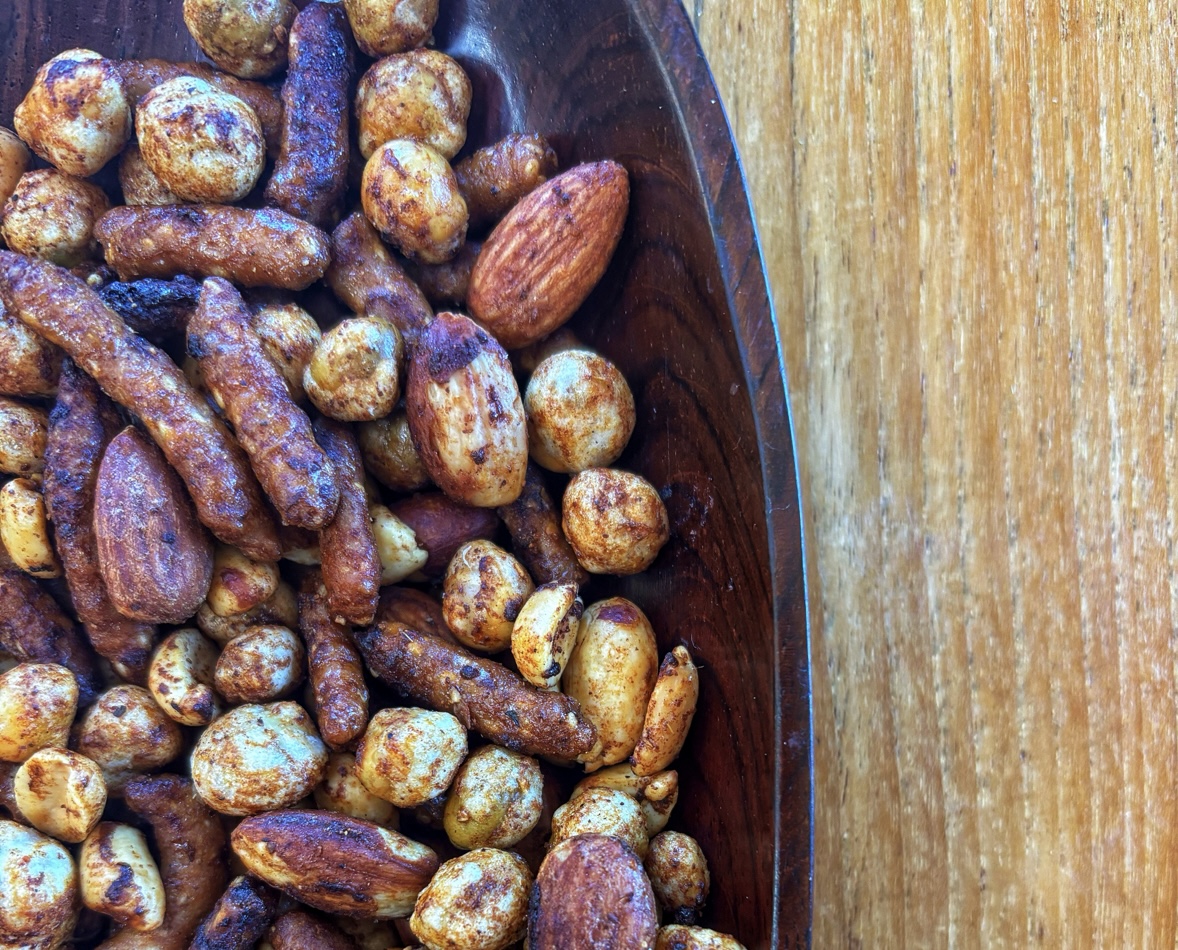Growing up I can remember Grandma’s ancient waffle iron heating up on the counter.
I remember as I watched the batter dripping out of the sides, I could hardly wait for the hot, fresh and fluffy waffles to hit the plate.
I remember pouring syrup into every waffle cranny, ensuring each piece was overflowing with sugary goodness.
I’ve lots of memories associated with syrup – but one more recent memory really got me thinking.
Our Saturday morning breakfast tradition of homemade waffles or pancakes is one we all look forward to, even when on the road. When visiting Grandma and Grandpa’s this summer, Greg cooked up a batch of pancakes and we dove into our breakfast tradition. No sooner had the kids taken the first bite, did they make a comment. “This tastes different,” they said in unison. They then proceeded to gobble down the pancakes without another thought.
Greg and I immediately knew the culprit: the syrup.
Sugar maple trees are unique to North America, growing naturally in the northeastern U.S. and southeastern Canada. The American Indians first discovered how to make syrup by collecting the sap in containers made from birch bark, then boiling it. Because they were unable to store the sticky liquid, they often boiled it a bit longer to make maple sugar. The Indians taught Europeans upon their arrival on the shores, and ever since maple syrup has been part of our history.
Yet, with such a wonderful history, why is it that we’ve all become accustomed to using something that barely resembles the real thing? I took a look at the label from one of those imitation syrups: high fructose corn syrup, water, natural and artificial flavors, cellulose gum, salt, caramel color, etc. etc. etc. It is the syrup I grew up on, the one so many us use, even though it only slightly resembles true maple syrup. (that’s why the label usually reads “maple flavored breakfast syrup.”
Making the Grade
It takes about 40 gallons of sap to make just one gallon of pure maple syrup, which is probably why there are so many cheap imitations out there.
Pure maple syrup is graded according to Federal USDA regulations, and is based on both color and flavor. In it’s pure and natural form, its flavor is wonderful. Go ahead; make the comparison. Buy pure maple syrup and try it alongside your maple flavored breakfast syrup of choice.
Once you’ve decided to make the switch to pure maple syrup, you’ll be confronted with a choice – which grade to use.
Pure maple syrup is available in several grades, with each state using slightly different terminology. The following terminology is from the Massachusetts Maple Producers Association.
Grade A Light Amber: Very light and has a mild, more delicate maple flavor. It is usually made earlier in the season when the weather is colder. This is the best grade for making maple candy and maple cream.
Grade A Medium Amber: a bit darker and has a bit more maple flavor. It is the most popular grade of table syrup, and is usually made after the sugaring season begins to warm, about mid season.
Grade A Dark Amber: darker yet, with a stronger maple flavor. It is usually made later in the season as the days get longer and warmer.
Grade B: sometimes called Cooking Syrup, is made late in the season, and is very dark, with a very strong maple flavor, as well as some caramel flavor. Although many people use this for table syrup, it is often used for cooking, baking and flavoring in special foods.
As for choosing between Grade A or Grade B, it is all a matter of choice. As previously mentioned, Grade B is preferred for cooking and baking, everyone has their own personal taste. Whichever grade you choose, rest assured that your real maple syrup choice is better than the artificial syrups most of us grew up on.
Keep in mind, that while real maple syrup may cost a bit more, because of its full flavor, you won’t need to use as much. And, if you’re still comparing the price per serving, don’t forget to factor in your satisfaction – (OH, did I forget to mention, you’ll be cutting out all those artificial flavors as well!).
More Than Breakfast
Maple syrup is a wonderful addition to the kitchen any time of the day. In addition to cooking and baking with syrup, use a dollop on top of cold and hot cereal, drizzle over fruit, mix into plain yogurt, on ice cream, in a milk shake. It adds a wonderful depth of flavor when poured over butternut or acorn squash, and is even tasty when used in stir-fry dishes. Don’t forget the numerous other pure maple products you can enjoy: maple sugar, candy, cream, and even jelly.
Following are a few recipes for enjoying maple syrup on something other than pancakes.
These and other recipes are available from Vermont Sugar Makers’ Association.
Vermont Maple Chicken
- 1 chicken, 2 ½-3 lbs cut up
- ¼ cup melted butter
- ½ cup pure VT maple syrup
- ½ tsp grated lemon rind
- 1 tsp salt
- dash of pepper
- 2 tsp lemon juice
- ¼ cup sliced almonds (optional)
Preheat oven to 400 degrees F. Place chicken pieces in a shallow baking dish. Mix remaining ingredients and pour over chicken. Bake uncovered, 50-60 minutes, basting.
Source: The Official Vermont Maple Cookbook, 2nd edition
Maple Winter Squash – Two Ways
- Winter Squash
- Pure VT Maple Syrup
- Butter
First option: Peel and slice or cube winter squash, cook, drain and mash. For each medium-sized squash, add 2 tbsp of maple syrup and 1 tbsp of butter when mashing.
Second optin: Cut squash in half horizontally, clean out seeds and pulp Add 2 tbsp of maple syrup and 1 tbsp of butter to each half. Bake at 375 degrees for 45 minutes or until soft.
Source: The Official Vermont Maple Cookbook, 2ndedition.


